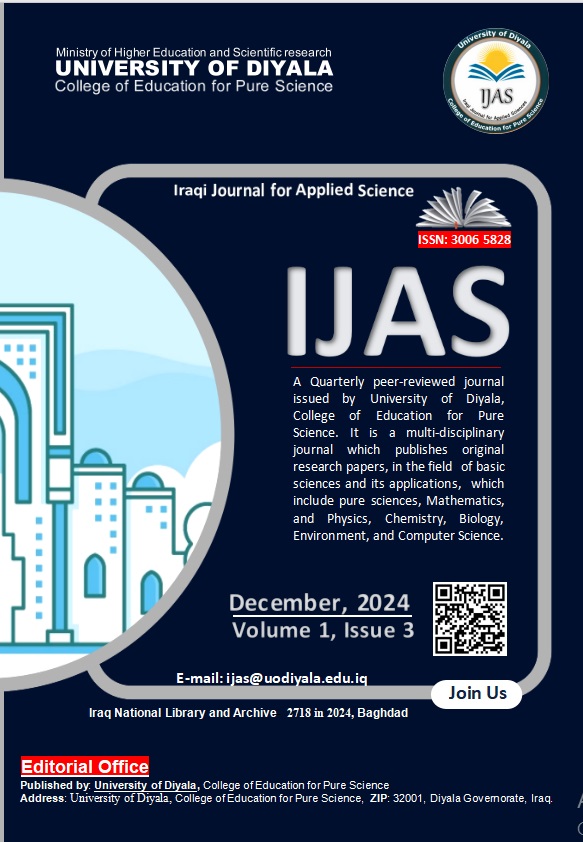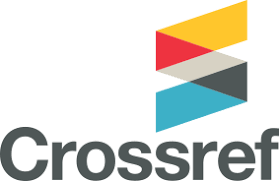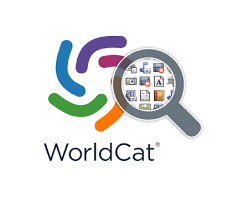Evaluating Radioactivity Levels and Determining Risk Indicators in Plant Samples in Kirkuk- Iraq
DOI:
https://doi.org/10.69923/m7spn227Keywords:
Natural radioactivity, Radiation risk indicators, Plant samples, Gamma-ray spectrometer, Effective dose, Food securityAbstract
This study aims to assess the natural radioactivity of radioactive isotopes (Ra226, Th232and K40) in plant samples using a high-purity germanium (HpGe) gamma-ray spectrometer. Fifteen plant samples, equally distributed among vegetables, legumes, and grains, were collected from local markets in Kirkuk, Iraq. The radioactivity of radionuclides was analyzed, and relevant radiation risk indicators were calculated. Results showed that the specific activity of Ra226 ranged from (0.46 to 50.04 Bq.kg-1) while the specific activity of Th232 ranged from below detection limits (B.D.L. to 25.42 Bq.kg-1). For K40, the specific activity ranged from (90.35 to 587.60 Bq.kg-1). Radiation risk indicators were calculated, with radium equivalent (Raeq) values ranging from (7.946 to 118.772 Bq.kg-1). The gamma level index (Iγ) ranged from (0.067 to 0.876), while the external hazard coefficient (Hex) ranged from (0.021 to 0.320), and the internal hazard coefficient (Hin) ranged from (0.022 to 0.456). The absorbed dose rate in air (D) was estimated to range from (4.268 to 63.728 nGy.h-1). Annual external and internal effective doses were calculated, with maximum values of (0.078 and 0.312 mSv.y-1), respectively, and minimum values of (0.001 and 0.020 mSv.y-1), respectively. Variation in radiation risk indicator values was observed, with some within internationally permissible limits, while others exceeded these limits, particularly in vegetable samples. This variation is attributed to the potential use of irrigation water with high radioactive content, which may pose a potential risk to living organisms that depend on these plants for food.
Downloads

Downloads
Published
Issue
Section
License
Copyright (c) 2024 Iraqi Journal for Applied Science

This work is licensed under a Creative Commons Attribution-NonCommercial-NoDerivatives 4.0 International License.
Licenses and Copyright
The following policy applies to the Iraqi Journal of Sciences (IJAS).
- IJAS applies Creative Commons Attribution (CC BY) license
- If you have written permission to do so, yes. If your manuscript contains content such as photos, images, figures, tables, audio files, videos, etc., that you or your co-authors do not own, we will require you to provide us with proof that the owner of that content (a) has given you written permission to use it, and (b) has approved of the CC BY license being applied to their content. We provide a form you can use to ask for and obtain permission from the owner. If you do not have owner permission, we will ask you to remove that content and/or replace it with other content that you own or have such permission to use. Don't assume that you can use any content you find on the Internet, or that the content is fair game just because it isn't clear who the owner is or what license applies. It's up to you to ascertain what rights you have” if any” to use that content.
- Many authors assume that if they previously published a paper through another publisher, they own the rights to that content and can freely use that content in their PLOS paper, but that is not necessarily the case; it depends on the license that covers the other paper. Some publishers allow free and unrestricted re-use of article content they own, such as under the CC BY license. Other publishers use licenses that allow re-use only if the same license is applied by the person or publisher re-using the content. If the paper was published under a CC BY license or another license that allows free and unrestricted use, you may use the content in your IJS paper provided that you give proper attribution, as explained above. If the content was published under a more restrictive license, you must ascertain what rights you have under that license. At a minimum, review the license to make sure you can use the content. Contact IJAS if you have any questions about the license. If the license does not permit you to use the content in a paper that will be covered by an unrestricted license, you must obtain written permission from the publisher to use the content in your IJSPlease do not include any content in your IJAS paper that you do not have rights to use, and always give proper attribution.
- If any relevant accompanying data is submitted to repositories with stated licensing policies, the policies should not be more restrictive than CC BY.
- IJAS reserves the right to remove any photos, captures, images, figures, tables, illustrations, audio and video files, and the like, from any paper, whether before or after publication, if we have reason to believe that the content was included in your paper without permission from the owner of the content.
References
Marshall,G.C.and H.W.Ohm 1987 .Yield responses of 16 winter wheat cultivars to row spacing and seeding rate .Agronomy Journal .79:1027-1030









